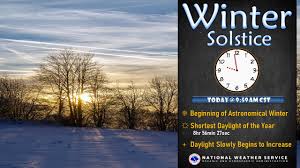The Mesmerising Aurora: Nature’s Light Show
Introduction
The aurora, commonly known as the Northern or Southern Lights, is one of nature’s most breathtaking spectacles. This natural light display occurs in polar regions and has fascinated humanity for centuries. The aurora not only captivates observers with its vivid colours and movements but also serves as a vital indicator of solar activity’s effects on Earth’s magnetosphere. Understanding the aurora is essential for both its scientific significance and its cultural impact.
What Causes the Aurora?
The phenomenon of auroras happens when charged particles from the sun collide with gases in Earth’s atmosphere. These interactions typically occur near the magnetic poles of the Earth, resulting in the stunning light display. The most common colours observed in auroras are green, pink, red, yellow, blue, and violet, created depending on the type of gas involved and the altitude of the collision. The aurora borealis (Northern Lights) is most prevalent in places like Norway, Canada, and Alaska, while the aurora australis (Southern Lights) can be typically seen in Antarctica, New Zealand, and parts of Australia.
Recent Developments in Aurora Research
Recent studies conducted by space agencies have shown that the aurora can serve as an essential indicator of space weather, which can affect satellite communications and power systems on Earth. For instance, NASA’s National Oceanic and Atmospheric Administration (NOAA) has been closely monitoring solar flares and coronal mass ejections that contribute to increased auroral activity. In late October 2023, a series of significant solar events resulted in unexpected auroras visible as far south as Northern California, illustrating the ongoing relevance of space weather to broader societal functions.
The Cultural Impact of Auroras
Auroras have also woven themselves into the fabric of various cultures. For the Sámi people in Scandinavia, these lights were viewed as a manifestation of the souls of the departed or as a fight between celestial beings. Many indigenous cultures across the globe have their interpretations and stories of the aurora. Today, modern tourism has emerged around aurora viewing, attracting visitors who wish to witness this stunning spectacle firsthand and partake in guided tours in polar regions.
Conclusion
The aurora remains a powerful reminder of our planet’s connection to solar activity and the larger cosmos. With increasing solar activity forecasted in the upcoming solar cycle, experts predict more intense auroral displays over the next few years, drawing nature enthusiasts and scientists alike to observe and study these phenomena. Understanding the aurora deepens not only our appreciation for this natural wonder but also reinforces the importance of ongoing research into space weather’s effects on Earth, ensuring that society can adapt to changes brought on by our ever-active sun.









